Originating from southern Europe and known since antiquity, chicory is grown for its foliage and its root. There are indeed numerous wild or cultivated species, each possessing a certain bitterness. The famous bitter drink is made from wild chicory (Cichorium intybus), also called "true endive". Very popular in northern France, it long replaced coffee or is blended with it for added flavour. A little neglected for several decades, this perennial is now making a comeback for its many benefits. Why not grow chicory in the garden? Discover when and how to make your own chicory.
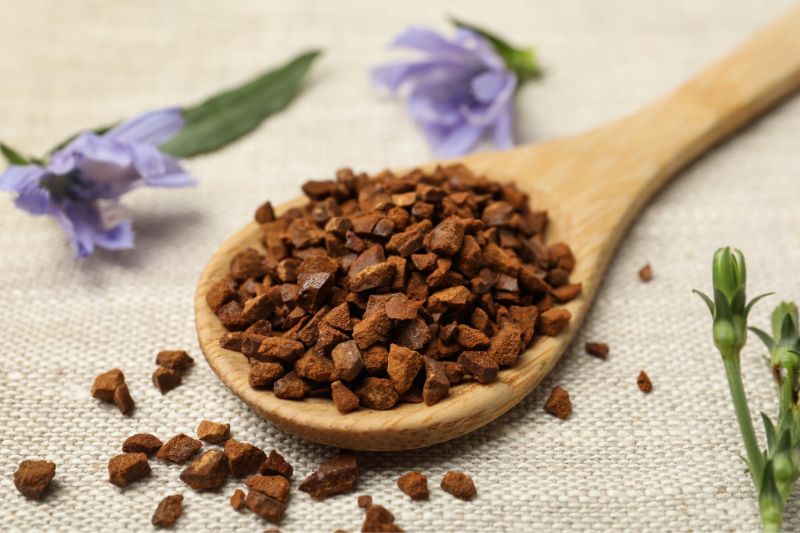
How to grow chicory?
When to sow chicory?
Wild chicory is sown from March to May depending on region, once risk of frost has passed. Also called "true endive", it needs daytime temperatures between 15 and 20 °C to germinate.
How to sow chicory?
1- Carefully weed soil and remove any stones from this small patch.
2- Work and loosen soil to 30 cm depth using a soil-aerating fork or a hand fork.
.3- If soil is not very rich, add compost or well-rotted manure.
4- With a hoe or the back of a rake, draw small furrows only about half a centimetre deep.
5- Water soil thoroughly.
6- Sow seeds spaced out, then cover with a fine layer of sieved soil or some potting compost.
7- Water again with a watering can fitted with a fine rose to avoid displacing seeds.
8- Keep soil moist until germination, about 3 to 5 days later.
9- When young plants are a few weeks old and form a small rosette, thin out so only one plant remains every 30 to 40 cm.
Note: Chicory has a taproot and does not tolerate transplanting. Sowing is therefore done directly in open ground only.
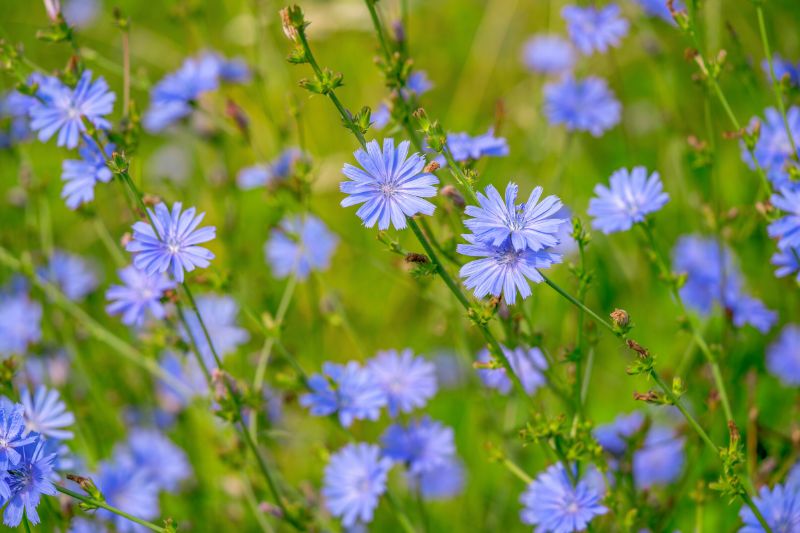
Blue flowers of wild chicory
When to harvest chicory?
Pull roots in autumn, between October and November, at first frosts. Brush and wash them straight after harvest.
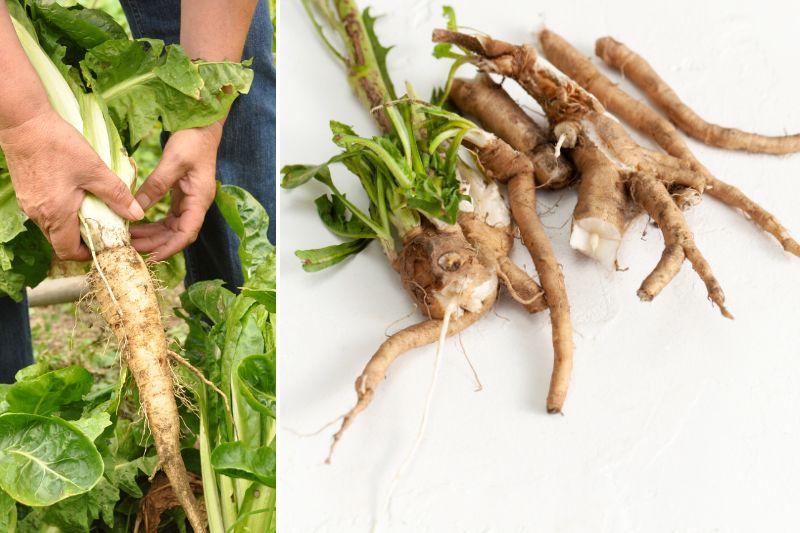
Chicory roots (left in industrial cultivation and right in garden cultivation)
How to make your own chicory?
- Once root is free of soil, cut it into thin slices, only two to three millimetres thick, no more. You will thus obtain chicory chips. Note: if roots are very thin, cut them lengthways instead.
- Then dry chips in open air, laying them out on a drying rack or clean cloth. Drying/dehydration of chips is done in open air. Turn them occasionally for about 2 weeks.
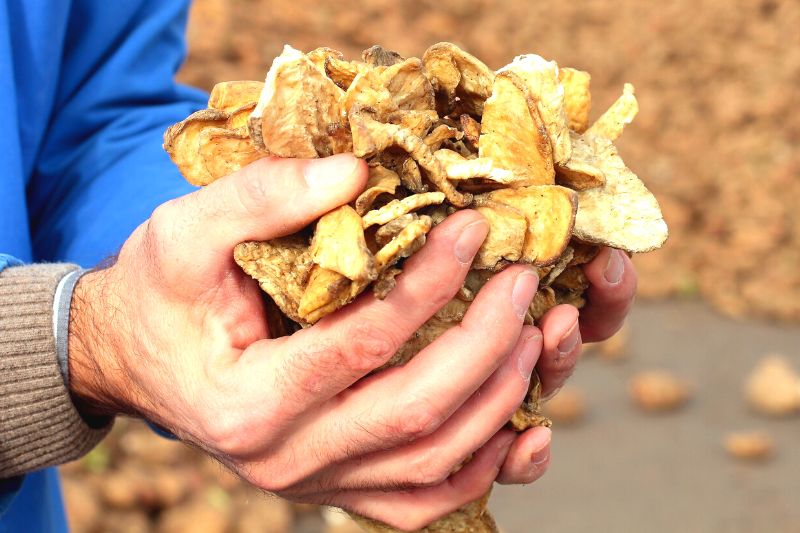
Dried chicory chips
- If you prefer roasted chicory, spread chips on a baking tray and bake at 150 °C until caramel-coloured. Watch frequently to avoid burning.
- You can then grind chicory to obtain a powder or finer granules.
Roasted or unroasted chicory?
Roasting has advantage of producing a milder taste, with caramel and hazelnut notes, and above all a less bitter drink from chicory root. A very good alternative to coffee! Minus the caffeine! However, this cooking will alter some plant properties, notably inulin which will transform into fructose under oven heat. It is this fructose that will caramelise, hence sweeter, milder taste.
When to drink chicory?
In France, particularly in north and in Belgium, chicory traditionally replaces or is blended with coffee, in morning, at midday or in evening. It seems to counteract coffee's adverse effects on stomach and contains no caffeine. It can also be mixed with milk.
Put 1 to 2 teaspoons of chicory in a tea infuser, then pour 250 ml boiling water. Leave to infuse for 5 minutes. Enjoy.
Did you know?
Chicory is also used in cooking for preparing sauces, marinades or to add flavour to meats during cooking. It is also used in patisserie, for making chocolates and desserts.
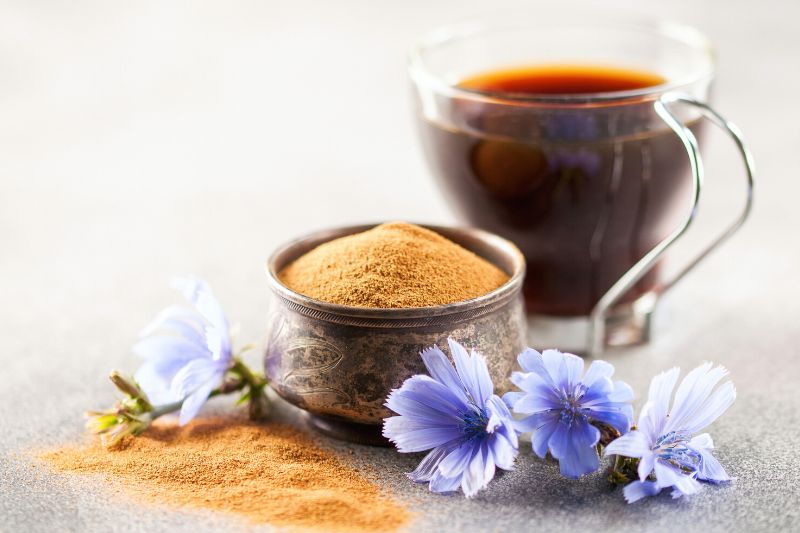
Powdered chicory flavours or replaces coffee
What are chicory's virtues?
Health benefits of chicory
Before advent of modern medicine, chicory was used for its detoxifying and liver-tonic properties, stimulating bile function. It is also said to have diuretic effects, improve bowel transit—particularly in cases of constipation—and to help skin problems. It is apparently rich in minerals.
Precautions
As it stimulates bile ducts, avoid consuming chicory in presence of liver disease. Also avoid if allergic to members of Asteraceae family. If prone to bloating, prefer roasted chicory.
































Comments